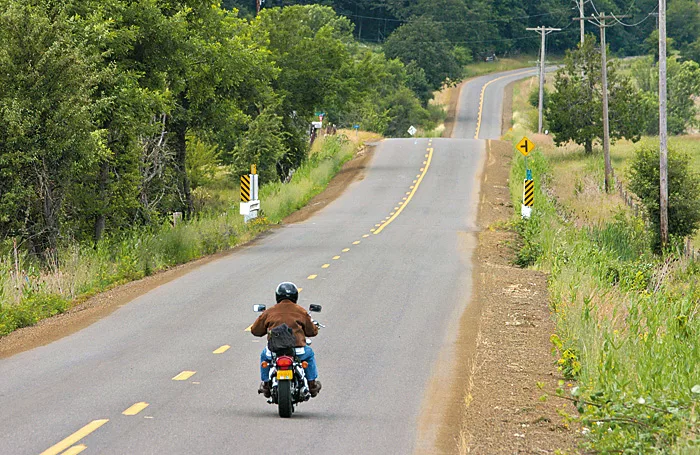YREKA, Calif., April 16, 2024 — Klamath National Forest fire managers are shifting gears from pile burning operations to preparing for prescribed underburning this spring.
Fire managers use prescribed underburning to decrease fuel loadings and mimic the effects of the natural fire regime that local ecosystems evolved with. Historically, fire was ignited by lightning and by Indigenous people tending the land. Fire in its natural role reduces dead vegetation, replenishes nutrients in the soil, stimulates new growth, and maintains biological diversity.
Fire was effectively removed from these systems with the arrival of settlers. After many years of fire exclusion, an ecosystem that needs periodic fire becomes unhealthy. Trees become stressed by overcrowding, fire-dependent species disappear, and an unnatural buildup of flammable fuels that can become hazardous when wildfires occur. Over a century of fire suppression has resulted in wildfires burning more severely than they historically did, threatening communities and ecosystems.
“Prescribed fire is an excellent opportunity to reintroduce a natural process and critical element back into the ecosystem on our terms and in strategic locations,” said Kelsey Lofdahl, Assistant Forest Fire Management Officer on the Klamath National Forest. “It is one of the most useful tools to help reduce fuels, restore our forests, and protect our communities and natural resources.”
Recent research conducted by the Pacific Southwest Research Station on the Klamath National Forest has illustrated the effectiveness of prescribed burning at reducing the severity of wildfires within treated areas. The study, released in February of this year, found that where the 2021 Antelope Fire intersected with previously completed fuels treatments, including prescribed burning, the severity of the burned area decreased compared to untreated areas.
Several prescribed burns are planned across the Klamath National Forest this spring. Timing of implementation will be dependent on fuel and weather conditions at each specific project location.
Happy Camp/Oak Knoll Ranger District
- The Cade Mountain prescribed burn (111 acres) is 3 miles northeast of Happy Camp in mixed conifer and hardwood forest and aims to reduce surface and ladder fuels in the area.
Salmon/Scott River Ranger District
- Crews plan to pick up where they left off last fall continuing ignitions out at the Scott Bar Mountain prescribed burn (500 acres) about 12 miles west of Fort Jones. The burn goals are to improve defensibility of homes in the area, increase resiliency of the forested stand against future wildfire events, and improve wildlife habitat. Scott Bar Mountain connects to a series of ridgetop fuels treatments, many of which were planned and implemented through collaborative efforts with partners. These treatments create a landscape-scale fuel break that can be used during wildfire events to protect communities, infrastructure, and natural resources.
- Just east of the Scott Bar Mountain project area lies the Singleton Project (500 acres), which is in mixed conifer stands and will tie in to the same strategic ridgetop fuel break.
Goosenest Ranger District
- The Van Bremmer (160 acres) and Tamarack (369 acres) underburns are two adjacent projects located three miles northeast of Tennant. The projects’ goals are to reduce hazardous fuels, promote browse for big game, and increase stand resilience against the effects of insects, disease, and wildfire. Both projects are in ponderosa pine stands with an understory of brush and white fir saplings.
- The First Creek prescribed burn (up to 1,174 acres) project is north of the Grass Lake Rest Area in mixed conifer with an understory of bitterbrush, manzanita, and snowbrush. Prescribed fire is being used to reduce surface fuel loads and reducing fire-intolerant white fir to create openings that favor fire-tolerant ponderosa pine regeneration.
- The Cedar Mountain prescribed burn (up to 3,650 acres) is just north of Antelope Sink, in ponderosa pine stands with areas of juniper and brush. Prescribed fire will be used to reduce fuels to improve defensible space for the community of Tennant and outlying residences. Other goals for the burn are to improve big game habitat, reduce juniper, encourage aspen regeneration, and promote forested stands that are resilient against drought, wildfire, and forest pests.
Prescribed burning activities on the Klamath National Forest are in conjunction with the efforts of Klamath River Basin Landscape, which is part of the USDA Forest Service’s Wildfire Crisis Strategy. The strategy, with funding from the Bipartisan Infrastructure Law and the Inflation Reduction Act, aims to reduce risk to communities, critical infrastructure, and natural resources from the ongoing wildfire crisis.
For more information on Klamath National Forest’s spring prescribed burning projects, contact Jennifer Erickson, Forest Fire Prevention Officer at 530-841-4469. Monitor the Klamath National Forest’s Facebook site for more timely information about these projects as they are implemented.





